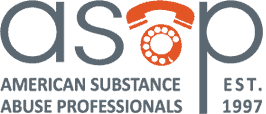One of the pillars of the current federal initiatives to end the opioid crisis is the development of new medications to treat opioid addiction. Currently we have three approved drugs—methadone, buprenorphine, and naltrexone—in a growing number of formulations, including some that are extended-release (long acting). But not all patients respond to the existing medications, and each patient has unique needs. With other chronic conditions such as hypertension or diabetes, there is a vastly wider array of treatment options that can be tailored to individual circumstances, and we need the same wide array of options in treating addiction.
Until now, a single criterion has been used as the test of a new opioid addiction medication during the drug development and FDA approval process: whether it can produce sustained abstinence in study participants compared to placebo. But there is growing concern that this may be too stringent a measure: If a patient reports meaningful improvement in functioning even with reduced use of illicit opioids, or if gains in specific areas of life and health such as sleep quality can improve a patient’s condition, shouldn’t these other criteria also be used to assess the value of a new treatment? In the latest issue of Science Translational Medicine, I joined colleagues from NIDA and FDA to make a case for alternative clinical endpoints—other than abstinence—that can be used to develop new treatments for addiction.
Importantly, patients themselves should have a voice in determining what outcome measures are important to them. Often, physicians and researchers do not know which symptoms are most troubling or what patients would prioritize in terms of beneficial outcomes. Thus, there is a move to involve patients in the process of discovering new therapies.
The FDA Patient-Focused Drug Development Initiative (PFDD), established in 2012, seeks to solicit patient perspectives on which symptoms are most important to target and how to measure meaningful improvement in those symptoms, based on how their disease impacts functioning and quality of life.
The pharmaceutical industry has also encouraged patient input in drug development, because it benefits them as well. Creating treatments that better address patients’ needs increases the likelihood that they will adhere to their treatments. This in turn provides an incentive for industry to invest resources in research and development rather than risk putting money into a medication that won’t be used.
On April 17, FDA, in collaboration with NIDA, is conducting a public meeting on patient-focused drug development for Opioid Use Disorder (OUD) to gain first-hand accounts from those with OUD. The objective of this meeting is to learn about patients’ experiences with current treatments as well as their experiences with medications to reverse overdose. It will be a unique opportunity for patients’ voices to be heard and have an impact in what kinds of treatments will be developed for opioid addiction in years to come.
This week at the National Rx Drug Abuse and Heroin Summit, NIH Director Francis Collins announced a near-doubling of funds to address the opioid crisis as part of the HEAL (Helping to End Addiction Long-term) initiative. Besides money, it will take creative in- and out- of-the-box thinking, as well as a coordinated “all hands on deck” approach to solve the crisis. And those hands shouldn’t be limited to the scientific and research world. Patients suffering from opioid addiction can have an active role in the development of new treatments for their disorder, and families of individuals with addiction can provide a valuable perspective as well.

